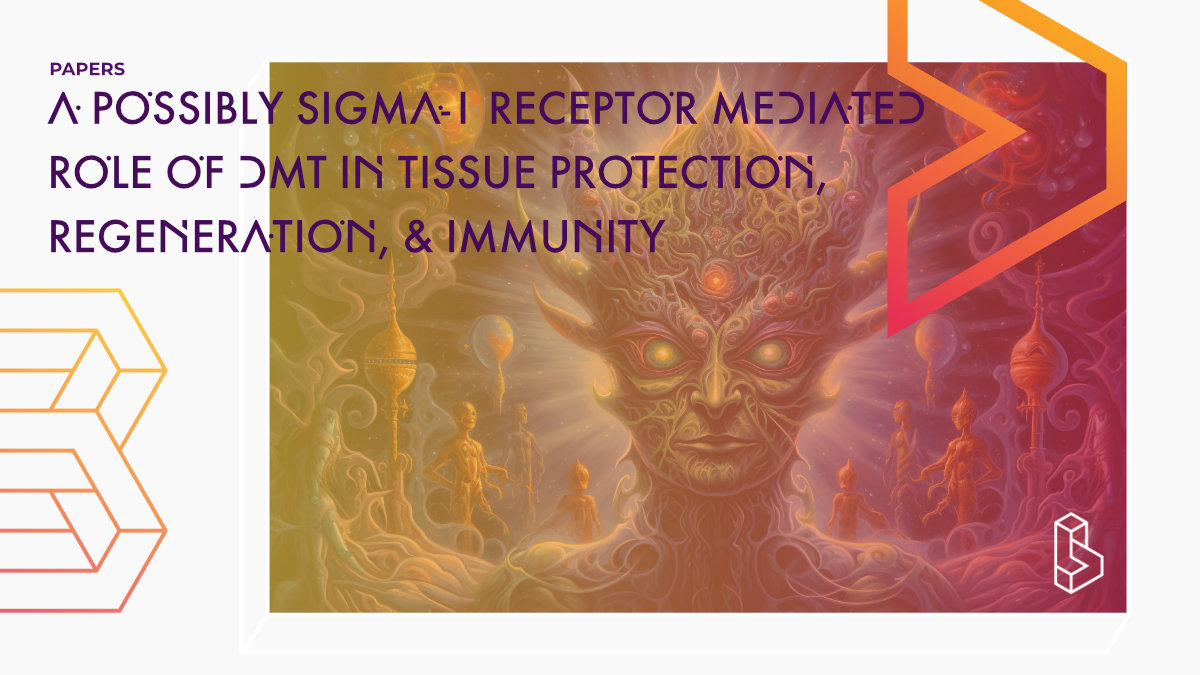This review (2012) postulates that DMT may play a role in cell protection, regeneration, and immunity by activating a cell-endogenous sigma-1 receptor pathway which regulates oxidative stress-induced changes at the endoplasmic reticulum–mitochondria interface. Supportive experimental data are still necessary for advancing the outlined concepts, such as the endogenous role of DMT or the immunoprotective benefits of exogenous DMT ingested in larger quantities.
Abstract of A possibly sigma-1 receptor mediated role of DMT in tissue protection, regeneration, and immunity
“Introduction: N,N-dimethyltryptamine (DMT) is classified as a naturally occurring serotonergic hallucinogen of plant origin. It has also been found in animal tissues and regarded as an endogenous trace amine transmitter. The vast majority of research on DMT has targeted its psychotropic/psychedelic properties with less focus on its effects beyond the nervous system. The recent discovery that DMT is an endogenous ligand of the sigma-1 receptor may shed light on yet undiscovered physiological mechanisms of DMT activity and reveal some of its putative biological functions. A three-step active uptake process of DMT from peripheral sources to neurons underscores a presumed physiological significance of this endogenous hallucinogen.
Methods: In this paper, we overview the literature on the effects of sigma-1 receptor ligands on cellular bioenergetics, the role of serotonin, and serotoninergic analogues in immunoregulation and the data regarding gene expression of the DMT synthesizing enzyme indolethylamine-N-methyltransferase in carcinogenesis.
Results: We conclude that the function of DMT may extend central nervous activity and involve a more universal role in cellular protective mechanisms. Suggestions are offered for future directions of indole alkaloid research in the general medical field.
Discussion: We provide converging evidence that while DMT is a substance which produces powerful psychedelic experiences, it is better understood not as a hallucinogenic drug of abuse, but rather an agent of significant adaptive mechanisms that can also serve as a promising tool in the development of future medical therapies.”
Authors: Ede Frecska, Attila Szabo, Michael J. Winkelman, Luis E. Luna, Dennis J. McKenna
Summary of A possibly sigma-1 receptor mediated role of DMT in tissue protection, regeneration, and immunity
DMT is a naturally occurring methylated indolealkylamine that is used in the preparation of sacramental psychoactive decoctions such as yage and ayahuasca. It has also been detected in animal tissues and is considered to act as an endogenous trace amine.
Biosynthesis and biodistribution of DMT
DMT is a psychedelic tryptamine that is synthesized from tryptophan by the enzyme indolethylamine-N-methyltransferase (INMT). INMT is found in the lungs, thyroid, and adrenal gland, and is also found in the placenta, skeletal muscle, heart, small intestine, stomach, pancreas, and lymph nodes.
Find this paper
https://doi.org/10.1007/s00702-013-1024-y
Open Access | Google Scholar | Backup | 🕊
Cite this paper (APA)
Frecska, E., Szabo, A., Winkelman, M. J., Luna, L. E., & McKenna, D. J. (2013). A possibly sigma-1 receptor mediated role of dimethyltryptamine in tissue protection, regeneration, and immunity. Journal of neural transmission, 120, 1295-1303.
Study details
Compounds studied
DMT
Topics studied
Chemistry
Neuroscience
Study characteristics
Literature Review
Theory Building
Authors
Authors associated with this publication with profiles on Blossom
Dennis McKennaDennis McKenna is an enthnopharmacologist, research pharmacognosist, lecturer, author, co-founder of the Heffter Research Institute and one of the elders in the psychedelic community.

